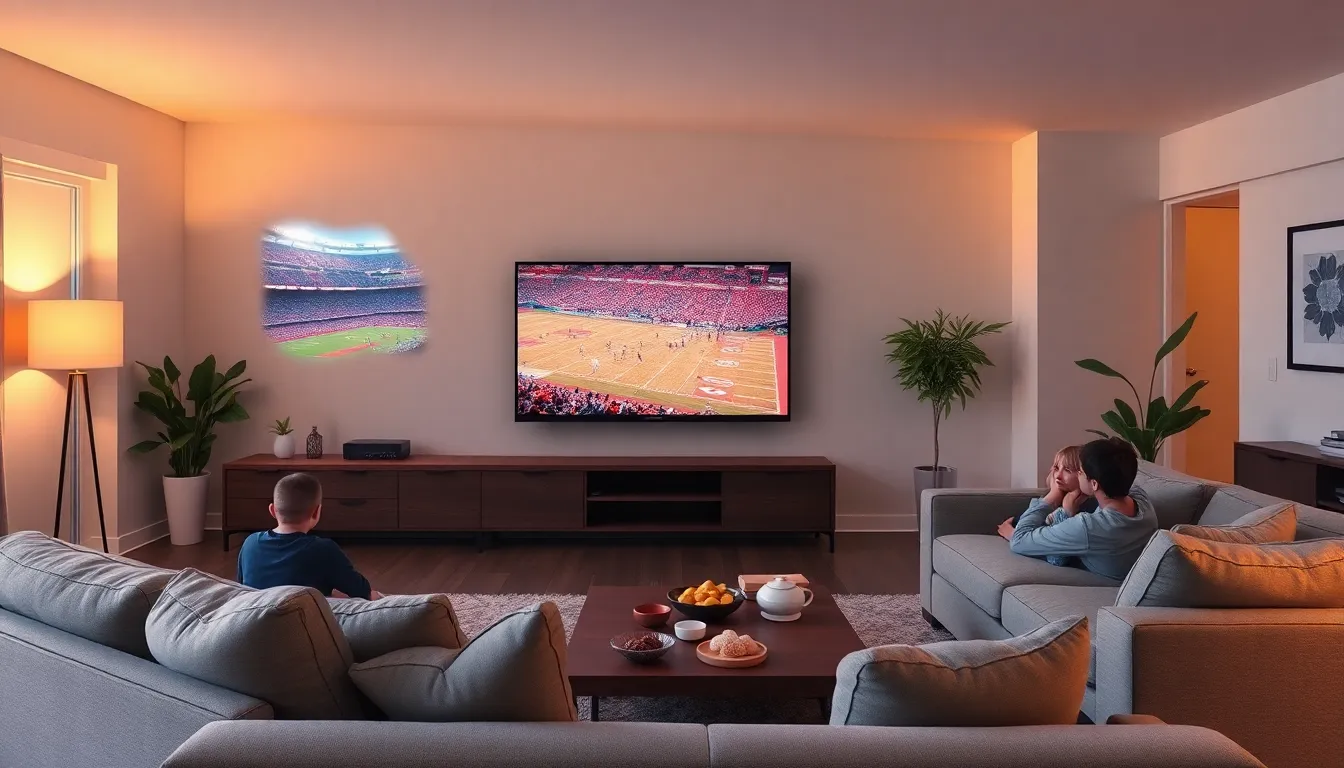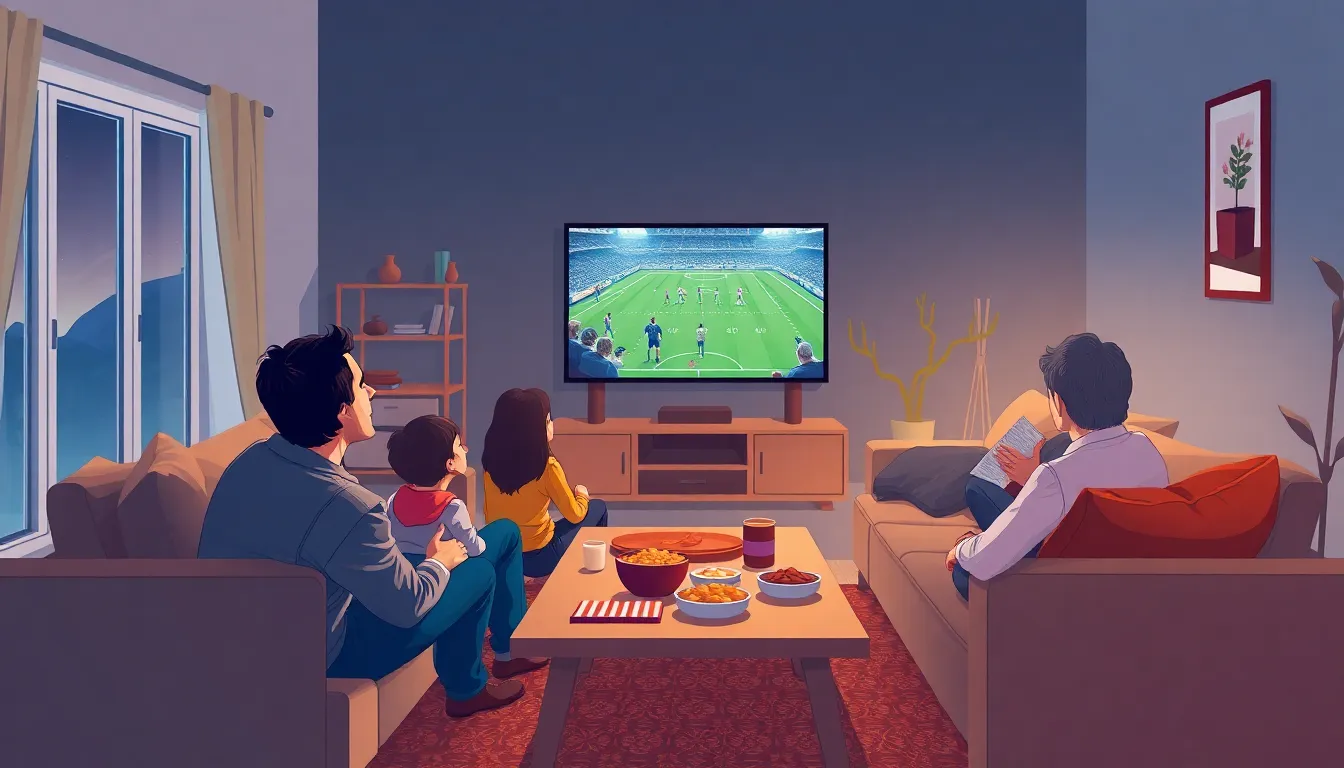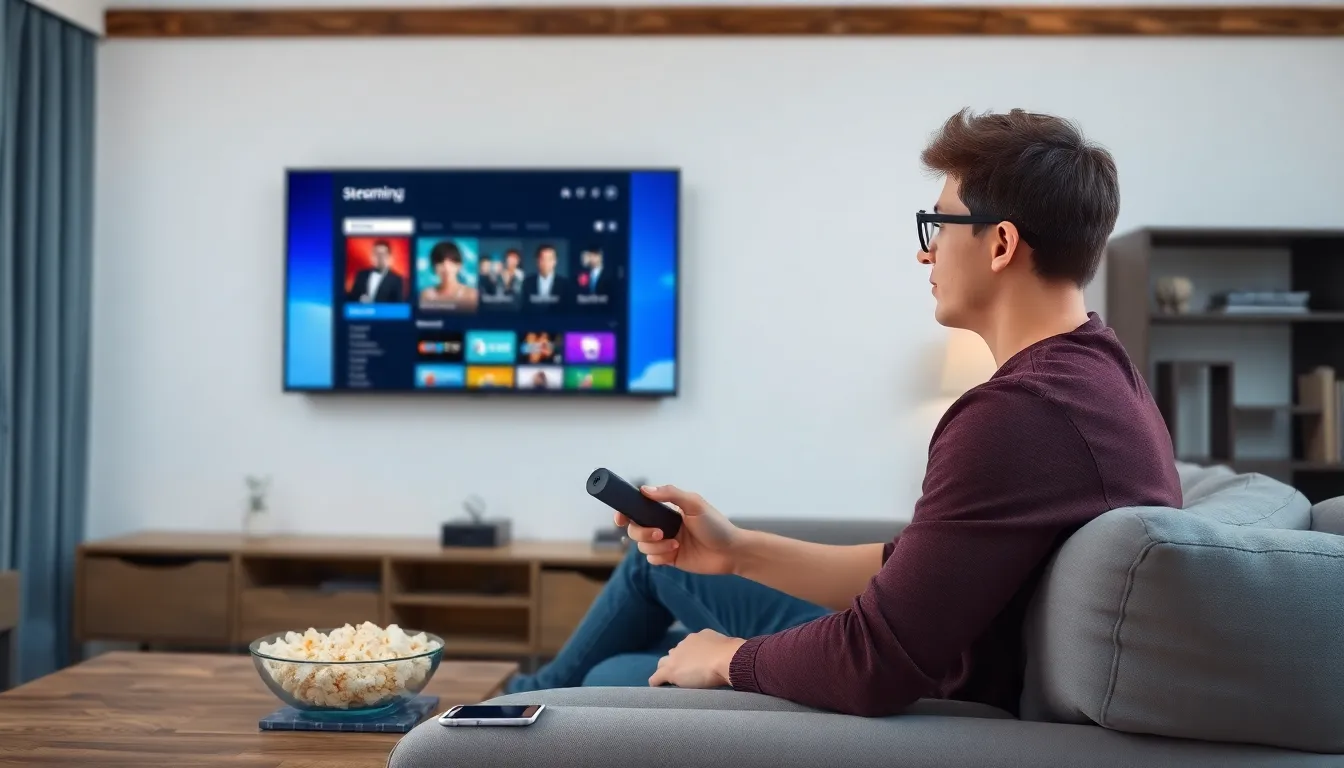In a world where binge-watching has become a competitive sport, the battle between cable TV and streaming services rages on. Picture this: you’re cozied up on the couch, remote in hand, ready to dive into your favorite show. But wait—do you reach for that clunky cable box or fire up your sleek streaming app? The choice can feel like deciding between a dinosaur and a rocket ship.
Cable TV, with its nostalgic charm, offers a buffet of channels but often comes with a price tag that could make your wallet weep. On the flip side, streaming services promise flexibility and a treasure trove of content, but can they truly replace the good old cable experience? Join the debate as we unravel the pros and cons of each option, helping viewers navigate this entertainment minefield with a smile.
Table of Contents
ToggleOverview of Cable TV and Streaming
Cable TV delivers a traditional viewing experience with numerous channels available through a subscription plan. Viewers often enjoy access to live events, local programming, and premium channels. Monthly costs can average between $70 to $150, depending on the package. Installation fees and equipment rentals often contribute to the overall expense.
Streaming services, in contrast, provide on-demand access to a diverse library of shows and films, often at a lower cost. Subscriptions typically range from $5 to $20 per month, making them budget-friendly options. They eliminate long-term contracts and offer flexibility in viewing habits. Many streaming platforms allow viewers to watch shows across multiple devices, enhancing convenience.
Interactivity characterizes streaming services, with tailored recommendations based on user preferences. This customization leads to a more engaging experience compared to standard cable offerings. Additionally, original content produced exclusively for streaming platforms has gained significant acclaim, attracting a dedicated audience.
Despite the growing popularity of streaming, cable TV maintains a loyal customer base. Some viewers prioritize sports and news coverage, which cable often provides with greater reliability. A combination of both services is common, accommodating varying entertainment needs. Viewer preferences continue to shape the competition between these two methods of content delivery.
Advantages of Cable TV


Cable TV offers several advantages that appeal to a broad audience. It provides a traditional viewing experience that many viewers appreciate, especially those accustomed to conventional programming.
Consistent Quality and Reliability
Cable TV delivers consistent quality in picture and sound, ensuring an uninterrupted viewing experience. Many subscribers enjoy the reliability of a service that functions without buffering or connectivity issues. It operates through physical connections, minimizing the risks of disruption from internet outages. Subscribers can rely on a stable streaming capacity year-round, unlike some streaming services where user experience may vary based on internet speed. Thus, those who prioritize viewing reliability often lean towards cable.
Variety of Live Programming
Live programming stands out as a significant advantage of cable TV. Channels dedicated to news, sports, and events provide immediate access to real-time content. Major sports events and news broadcasts often air solely on cable channels, making them essential for fans. Additionally, cable TV offers a wide selection of channels, catering to diverse interests from music to lifestyle programming. In terms of content variety, cable excels in providing viewers with options that are often unavailable on streaming platforms.
Benefits of Streaming Services
Streaming services offer significant advantages that cater to modern viewing habits. These platforms provide viewers with unmatched flexibility and options for on-demand content.
Flexibility and On-Demand Viewing
Viewers enjoy the freedom to watch shows and movies at their own pace. Streaming services allow users to pause, rewind, or binge-watch entire seasons without any scheduling constraints. Platforms like Netflix, Hulu, and Amazon Prime Video feature extensive libraries that are accessible anytime, anywhere. Users can switch devices seamlessly, watching on tablets, smartphones, or smart TVs. Additionally, tailored recommendations based on viewing history enhance the experience, simplifying content discovery.
Cost-Effectiveness
Costs stand out as one of the primary benefits of streaming services. Monthly subscriptions generally range from $5 to $20, significantly less than the $70 to $150 typical for cable TV. Many platforms offer free trial periods, enabling users to explore content before committing. There’s no need for expensive equipment rentals or lengthy contracts, making it easy for viewers to change services as preferences evolve. Families and individuals alike find that installing streaming apps imposes minimal financial commitment, ensuring access to a wide range of entertainment.
Comparison of Cable TV and Streaming
Cable TV and streaming services present distinct options for viewers. Understanding their key differences helps consumers make informed decisions.
Pricing Models
Cable TV typically ranges from $70 to $150 per month, factoring in installation costs and equipment rentals. These expenses often accumulate quickly. In contrast, streaming services offer more affordable rates, generally between $5 and $20 per month. No long-term contracts appeal to many individuals, allowing flexibility in subscription choices. Many platforms also provide free trial periods, enabling easy exploration. This low financial commitment lets viewers adjust their subscriptions as preferences change.
User Experience
Cable TV delivers a traditional viewing experience with reliability and consistency in picture and sound quality. Subscribers benefit from minimal disruptions since the service operates through physical connections. Live programming, especially for news and sports, remains a strong point for cable TV. Streaming services, however, excel in on-demand access to content. Viewers enjoy the ability to pause, rewind, or binge-watch entire seasons whenever desired. Platforms like Netflix and Hulu feature extensive libraries, accessible from multiple devices. Tailored recommendations enhance engagement, ensuring users find shows that resonate with their interests.
Future Trends in Entertainment
Cable TV and streaming services are evolving rapidly, impacting viewer habits. Streaming platforms are setting the pace with innovative features. Data from surveys indicate that 60% of adults prefer on-demand content over scheduled programming. Users appreciate the flexibility of watching shows anytime and anywhere.
Ad-supported streaming services are gaining traction, offering budget-friendly options without sacrificing content variety. In addition, many platforms introduce exclusive content to attract subscribers. Original series and films are becoming key differentiators in subscriber decisions.
Cable TV isn’t disappearing, as it adapts to new trends. Many providers are integrating streaming options within their services. This hybrid model caters to viewers who desire both live programming and on-demand access. To compete effectively, cable companies are also enhancing their digital platforms.
The introduction of 5G technology is likely to further disrupt the entertainment landscape. Faster speeds will enable seamless streaming experiences across multiple devices. Viewers will encounter improved picture quality and reduced buffering, increasing satisfaction levels.
Personalized content recommendations are more important than ever. Algorithms analyze viewing habits, enhancing user engagement and encouraging subscribers to explore different genres. Social viewing experiences, such as watch parties and shared experiences, foster a sense of community among viewers.
As consumers continue to gravitate towards streaming options, providers must adapt their strategies. Enhanced interactivity and immersive experiences will likely become common features. The competition between cable and streaming services will shape the future of entertainment, influencing how viewers consume content.




